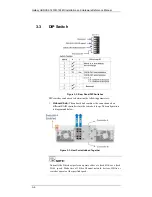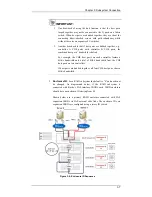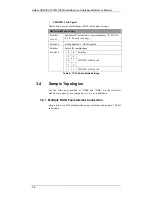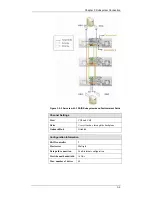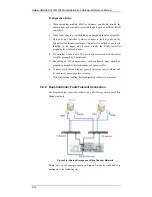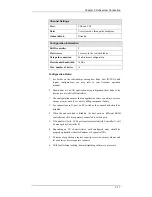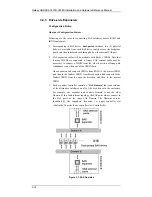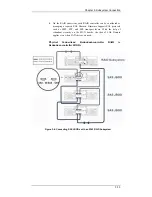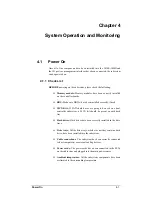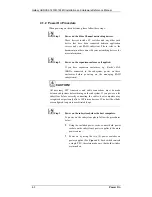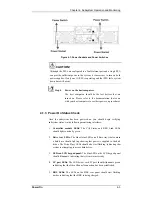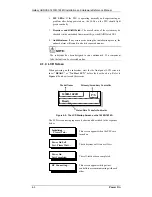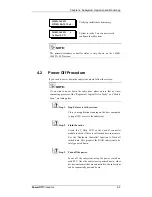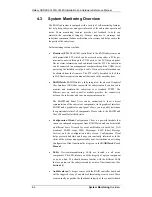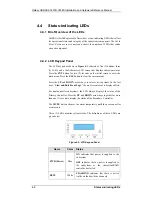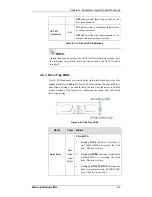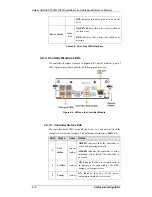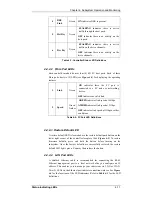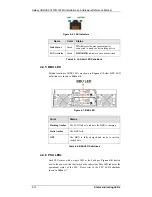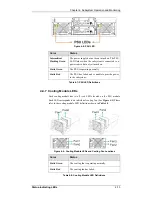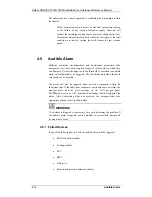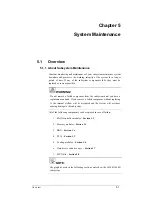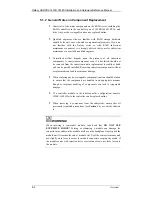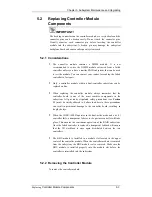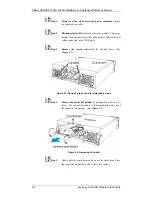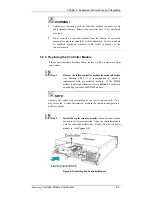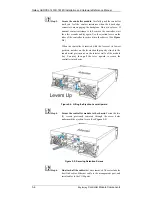
Galaxy GHDXS2-1430R-16F4D Installation and Hardware Reference Manual
4-6
System
Monitoring
Overview
4.3 System
Monitoring
Overview
The RAID subsystem is equipped with a variety of self-monitoring features
that help keep subsystem managers informed of the subsystem operational
status. These monitoring features provide vital feedback to help you
maintain the operational integrity. Prompt response to warnings and
subsystem component failure notifications is necessary and helps ensure the
longevity of the subsystem.
Self-monitoring features include:
•
Firmware (FW)
: The RAID controller(s) in the RAID subsystem come
with preinstalled FW, which can be accessed using either a PC hyper-
terminal connected through the COM ports or the LCD keypad panel.
Device status information can be obtained from the FW. The subsystem
can be connected to a management computer through the COM1 serial
port using the included serial port cable. Device status information can
be obtained from the firmware. The FW is fully described in the Fibre
to SAS firmware operation manual that came with your subsystem.
•
RAIDWatch:
RAIDWatch is a fully integrated, Java-based, Graphical
User Interface (GUI) that came with the subsystem and can be used to
monitor and maintain the subsystem over standard TCP/IP. The
Ethernet port on each controller module provides the connectivity
between the subsystem and your management computer.
The RAIDWatch Panel View can be customized to show a direct
representation of the subsystem components via its graphical interface.
RAIDWatch’s graphical content panel allows you to quickly determine
the operational status of all components. Please refer to the RAIDWatch
User’s Manual for further details.
•
Configuration Client:
Configuration Client is a powerful module that
runs as an independent program from RAIDWatch and can be installed
on different hosts. It is used for event notification via email, fax, LAN
broadcast, SNMP traps, MSN Messenger, SMS (Short Message
Service), and the configuration utility screen. Configuration Client
helps prevent blind time and keeps you constantly informed as to the
status of the storage management subsystem. Instructions on activating
Configuration Client functionality are given in the
RAIDWatch User’s
Manual
.
•
LEDs
: Device-status-indicating LEDs are located on all active
components. The LED inform you of the integrity of a given component
or a given link. You should become familiar with the different LEDs
that are present on the subsystem and be aware of their functions. (See
Section 4.4
)
•
Audible alarm:
A beeper comes with the RAID controller board and
will be triggered if any of a number of threatening events occurs. These
events usually jeopardize the functional integrity of the controller board

